Abstract
The rate at which monkeys pressed a lever and avoided shocks was manipulated in several ways. Measurements were also made of their plasma levels of 17-hydroxycorticosteroids. The rate at which the animals pressed the lever and the frequency with which they received shocks were both implicated as determiners of the steroid levels.
Full text
PDF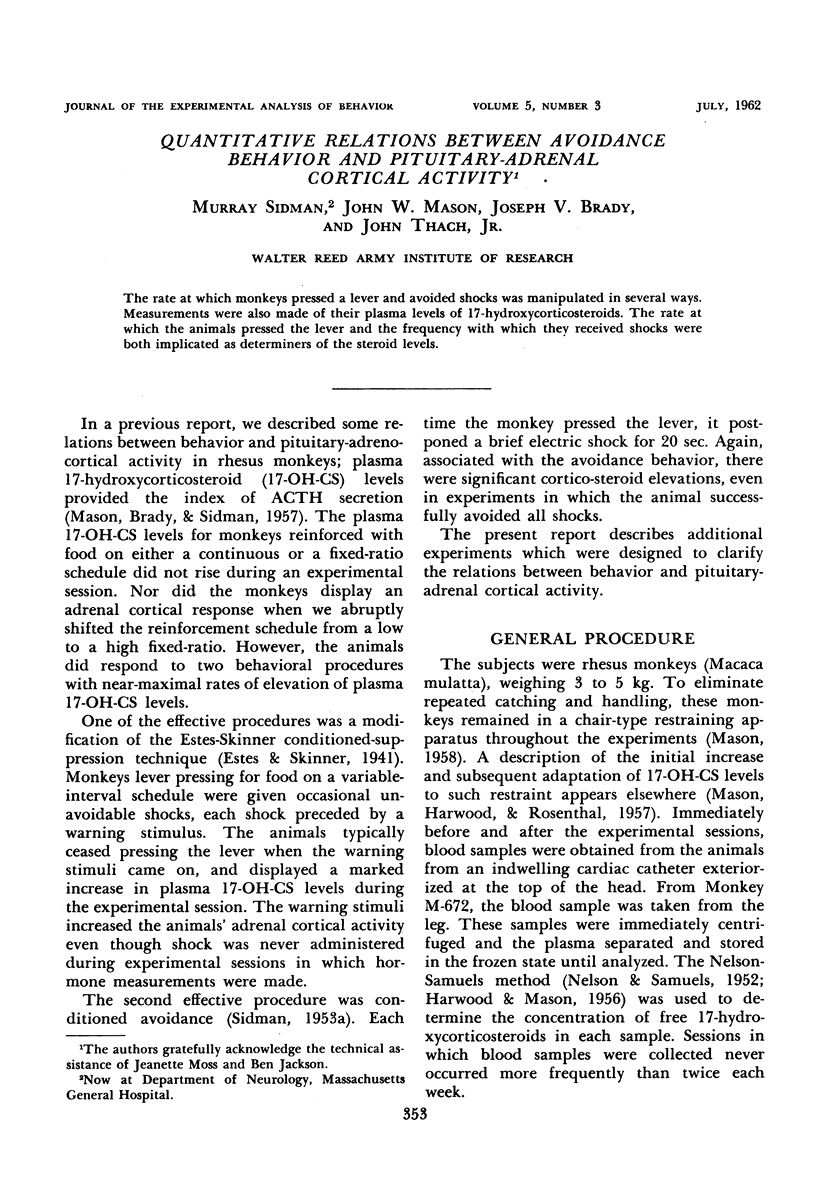
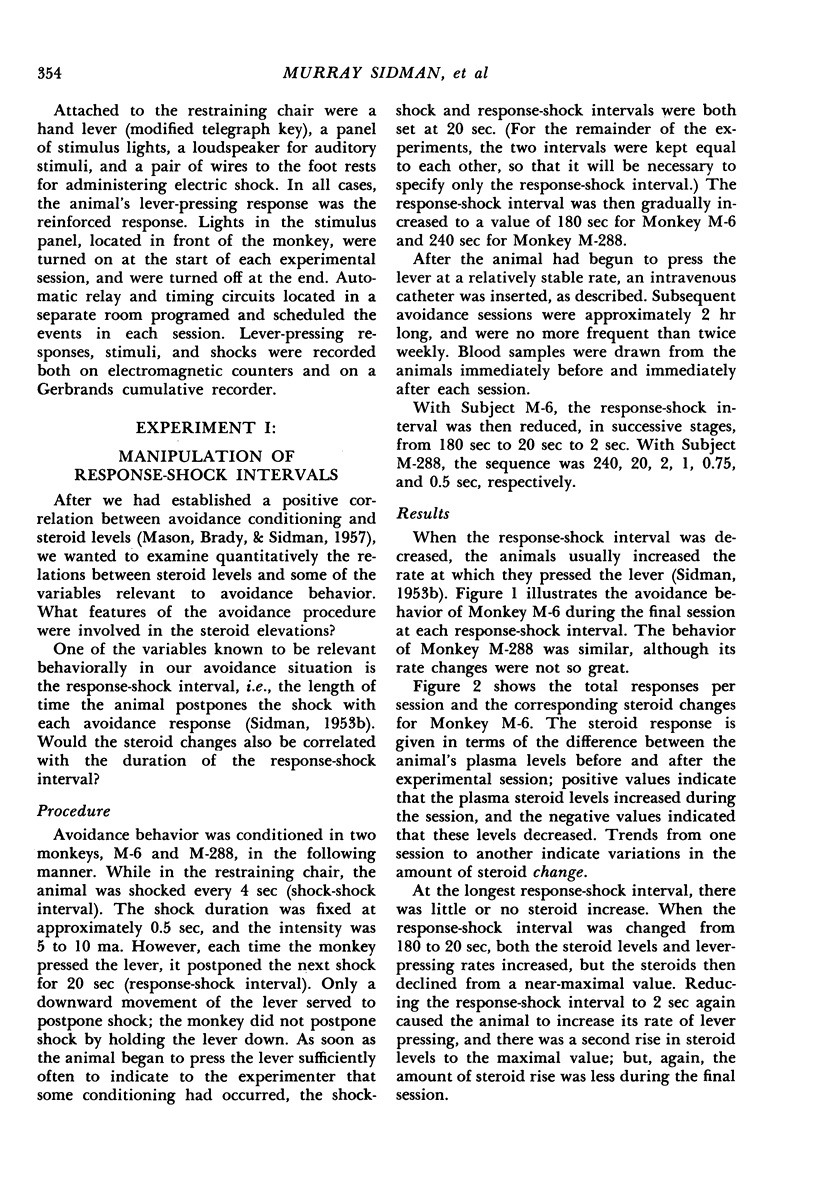

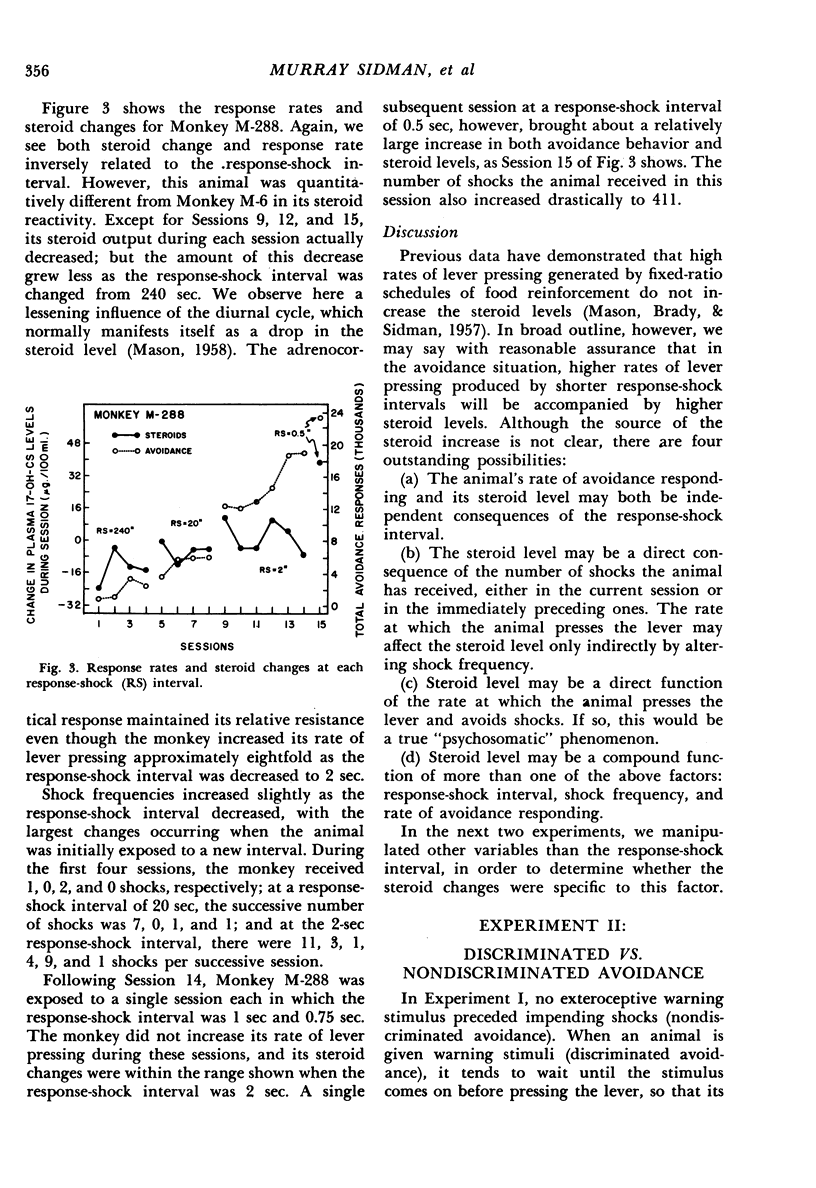
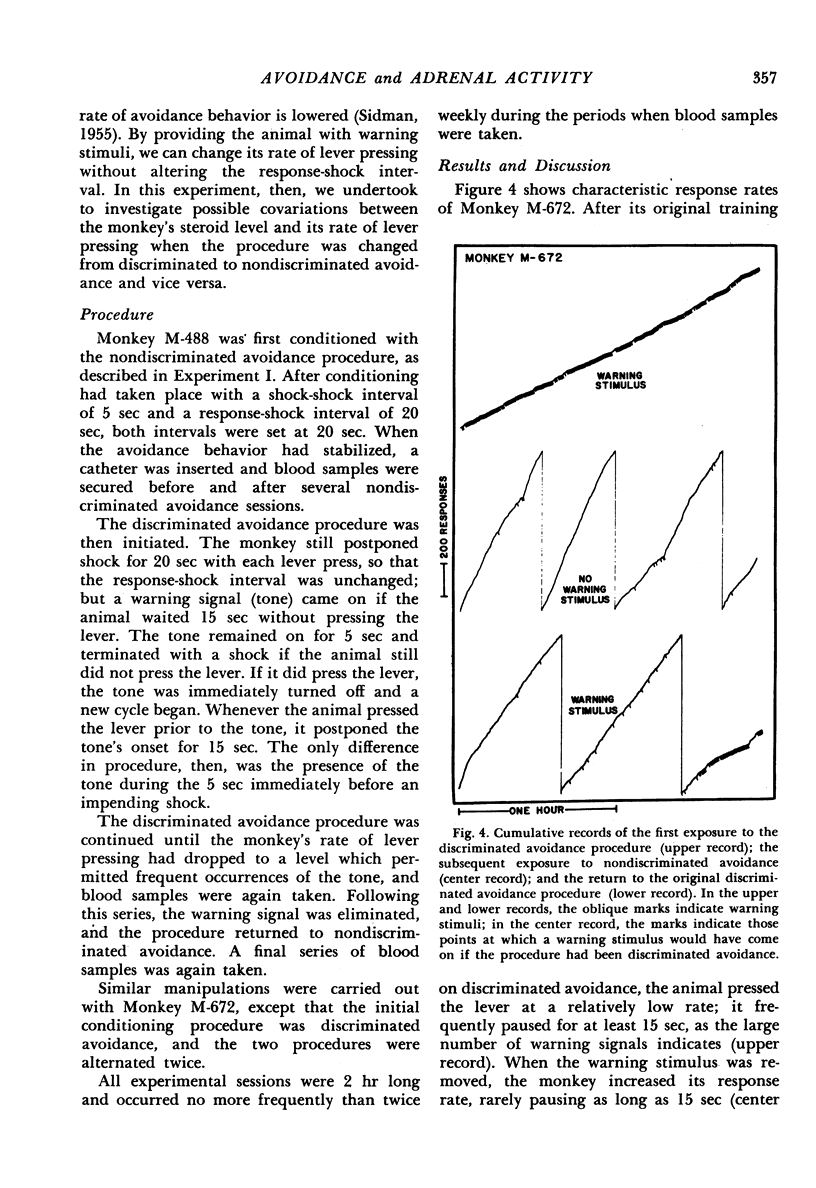

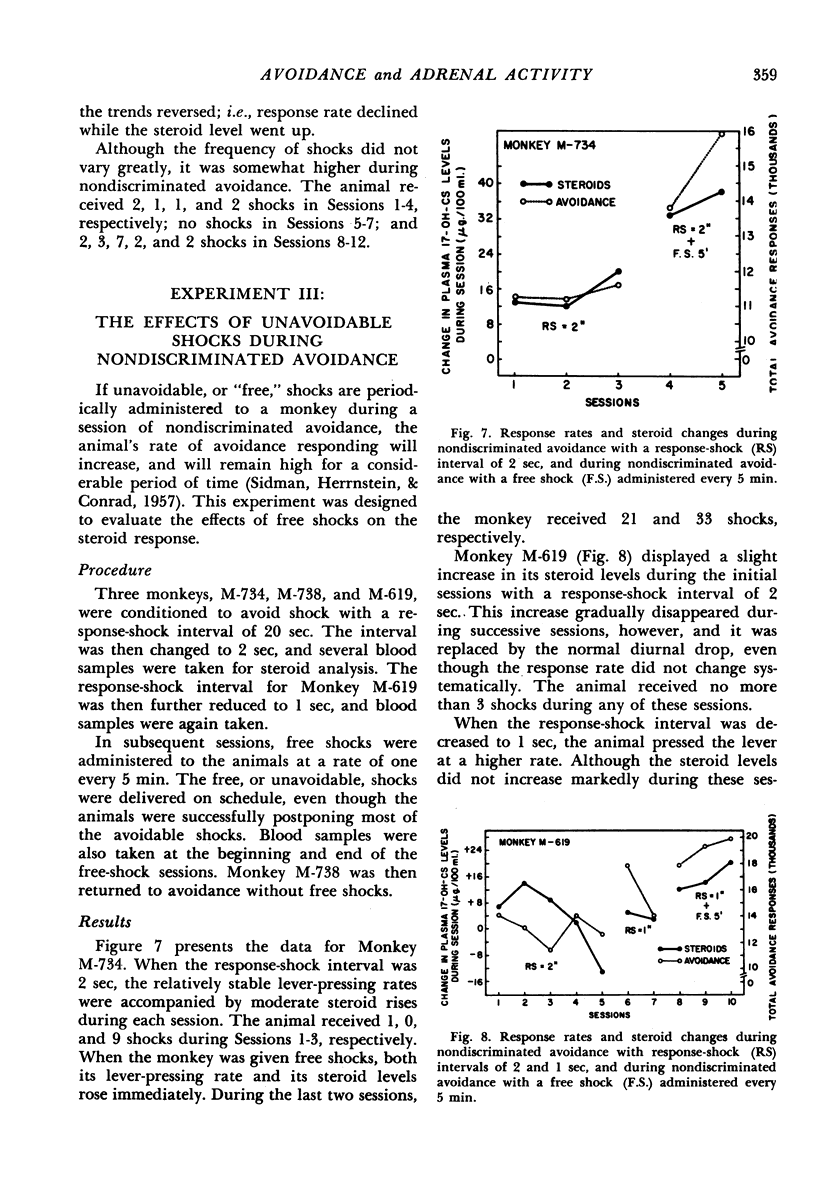
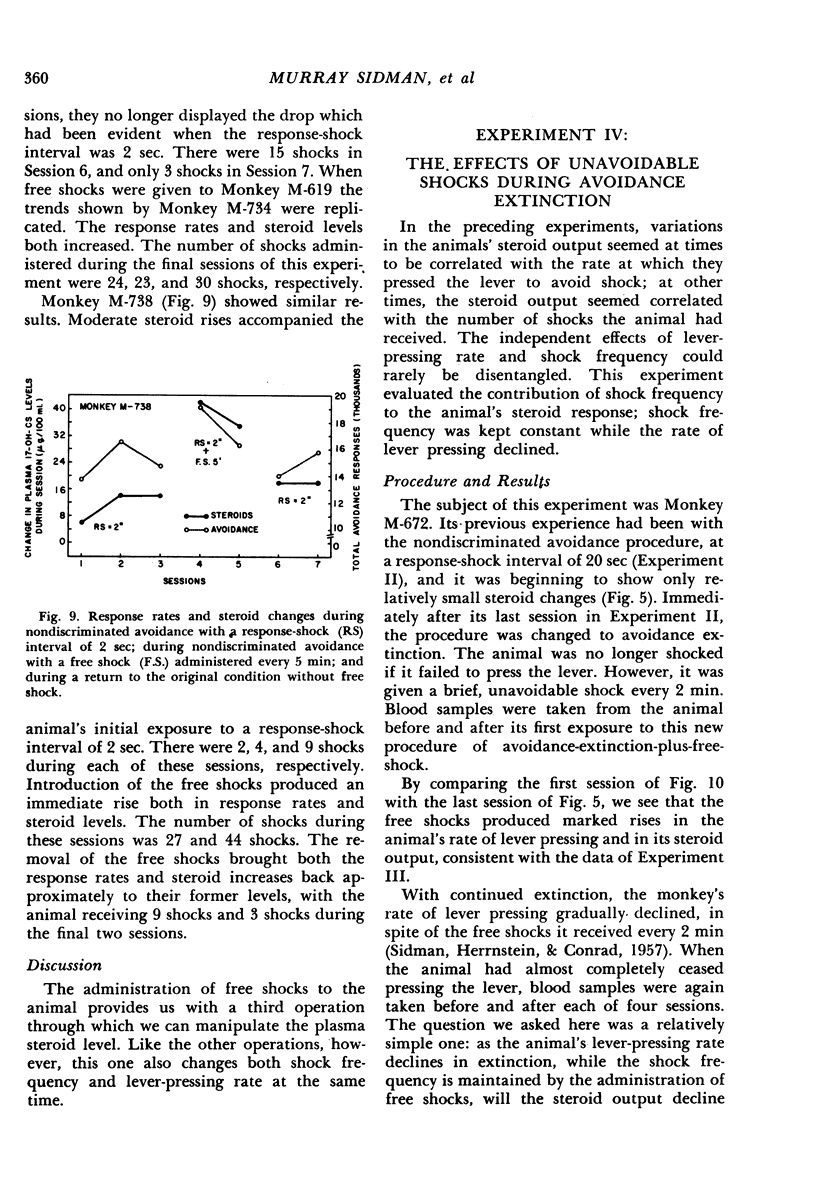
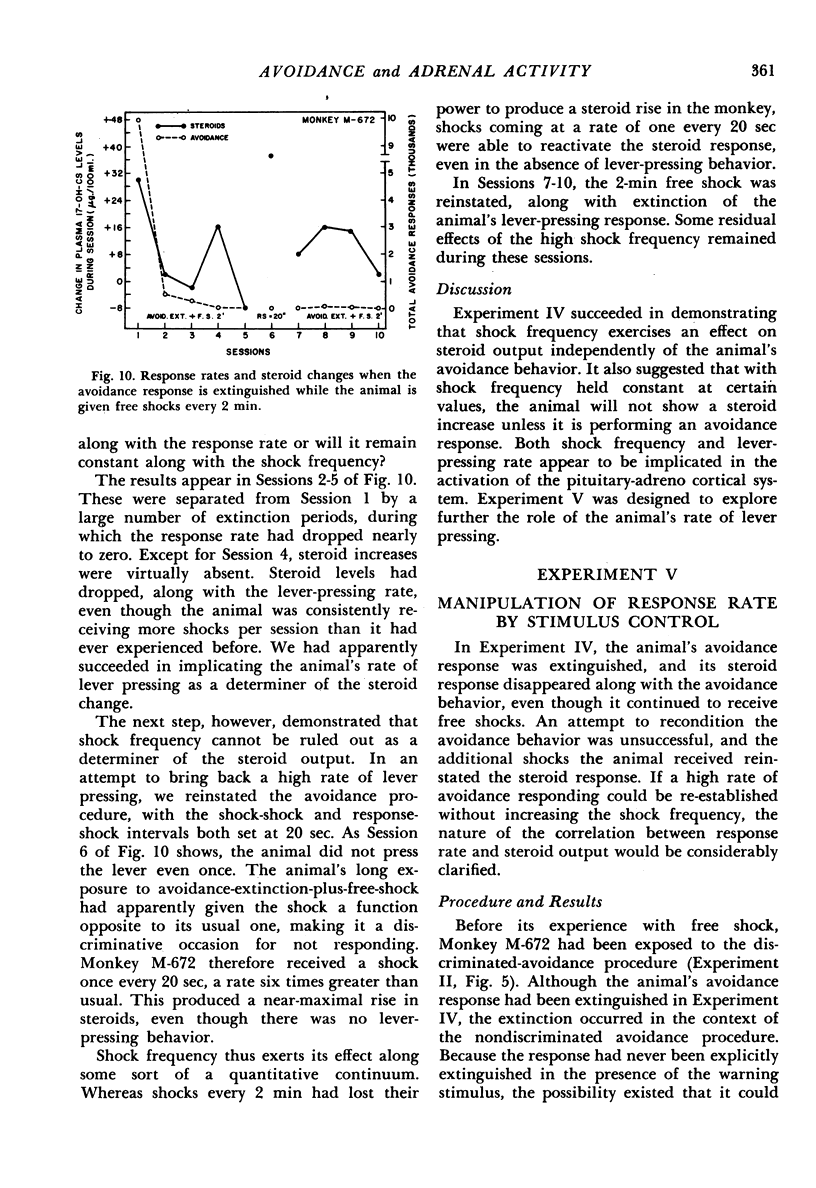
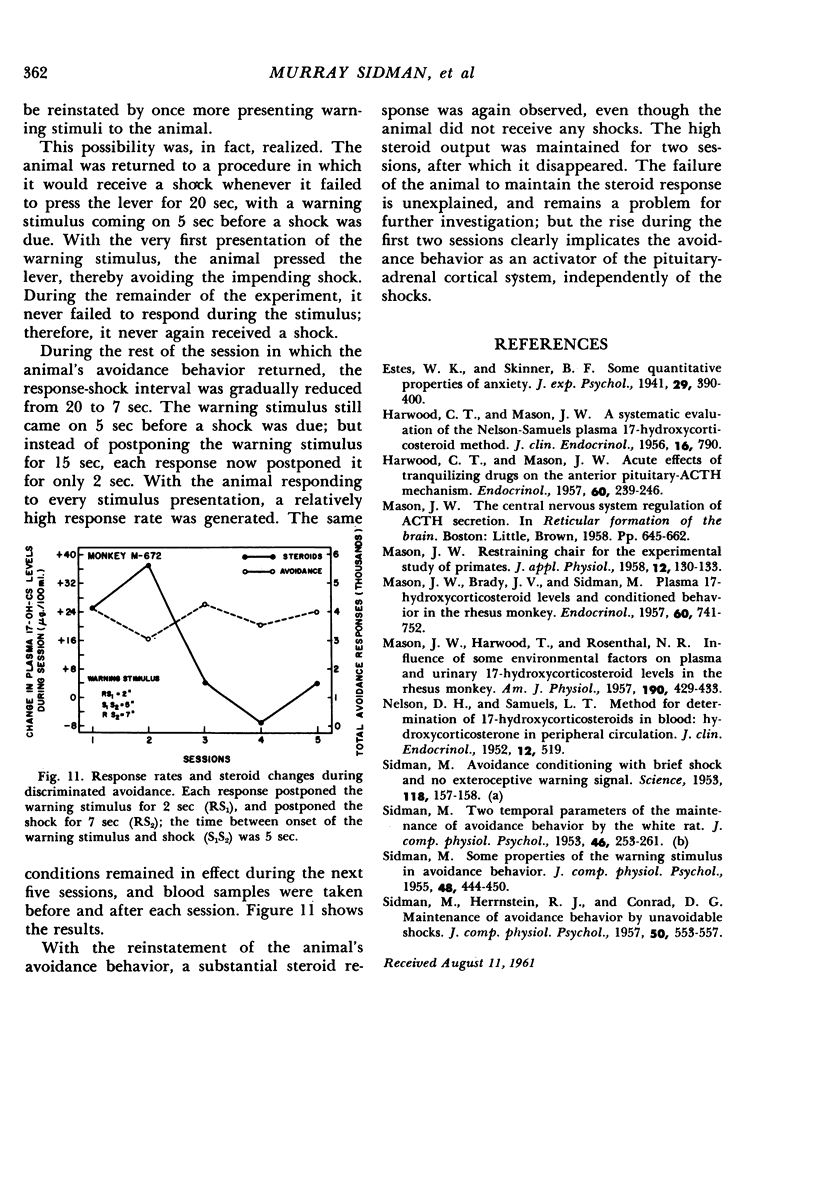
Selected References
These references are in PubMed. This may not be the complete list of references from this article.
- HARWOOD C. T., MASON J. W. A systematic evaluation of the Nelson-Samuels plasma 17-hydroxycorticosteroid method. J Clin Endocrinol Metab. 1956 Jun;16(6):790–800. doi: 10.1210/jcem-16-6-790. [DOI] [PubMed] [Google Scholar]
- HARWOOD C. T., MASON J. W. Acute effects of tranquilizing drugs on the anterior pituitary-ACTH mechanism. Endocrinology. 1957 Feb;60(2):239–246. doi: 10.1210/endo-60-2-239. [DOI] [PubMed] [Google Scholar]
- MASON J. W., BRADY J. V., SIDMAN M. Plasma 17-hydroxycorticosteroid levels and conditioned behavior in the Rhesus monkey. Endocrinology. 1957 Jun;60(6):741–752. doi: 10.1210/endo-60-6-741. [DOI] [PubMed] [Google Scholar]
- MASON J. W., HARWOOD C. T., ROSENTHAL N. R. Influence of some environmental factors on plasma and urinary 17-hydroxy-corticosteroid levels in the rhesus monkey. Am J Physiol. 1957 Sep;190(3):429–433. doi: 10.1152/ajplegacy.1957.190.3.429. [DOI] [PubMed] [Google Scholar]
- MASON J. W. Restraining chair for the experimental study of primates. J Appl Physiol. 1958 Jan;12(1):130–133. doi: 10.1152/jappl.1958.12.1.130. [DOI] [PubMed] [Google Scholar]
- NELSON D. H., SAMUELS L. T. A method for the determination of 17-hydroxycorticosteroids in blood; 17-hydroxycorticosterone in the peripheral circulation. J Clin Endocrinol Metab. 1952 May;12(5):519–526. doi: 10.1210/jcem-12-5-519. [DOI] [PubMed] [Google Scholar]
- SIDMAN M. Avoidance conditioning with brief shock and no exteroceptive warning signal. Science. 1953 Aug 7;118(3058):157–158. doi: 10.1126/science.118.3058.157. [DOI] [PubMed] [Google Scholar]
- SIDMAN M., HERRNSTEIN R. J., CONRAD D. G. Maintenance of avoidance behavior by unavoidable shocks. J Comp Physiol Psychol. 1957 Dec;50(6):553–557. doi: 10.1037/h0043500. [DOI] [PubMed] [Google Scholar]
- SIDMAN M. Some properties of the warning stimulus in avoidance behavior. J Comp Physiol Psychol. 1955 Dec;48(6):444–450. doi: 10.1037/h0047481. [DOI] [PubMed] [Google Scholar]
- SIDMAN M. Two temporal parameters of the maintenance of avoidance behavior by the white rat. J Comp Physiol Psychol. 1953 Aug;46(4):253–261. doi: 10.1037/h0060730. [DOI] [PubMed] [Google Scholar]


